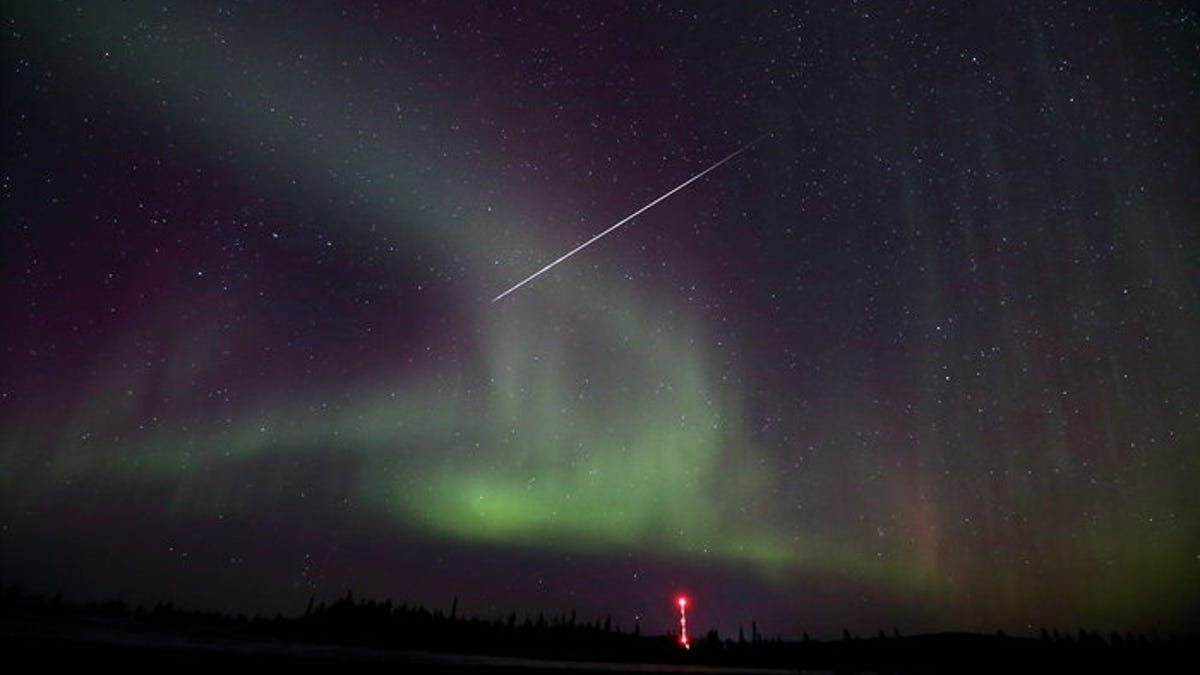Rocket scientist catches 'shooting star' and aurora in single shot
While readying a payload for space, an engineer captures a striking image of two different space objects aimed at Earth, along with two other cosmic travelers.
I think it's safe to assume that in the vastness of space, it's pretty rare for four very different types of cosmic travelers to meet, but that's basically what happened in this photo captured by European Space Agency payload system engineer Neil Melville as he prepared experiments for a November launch to the edge of space from Arctic Sweden.
The shot, released by the ESA this week, shows the red lights that make up part of a Swedish launch facility for rockets, which represent the only man-made space traveler shown.
Above them a meteor can be seen slicing through the Northern Lights, which are created by the interaction of cosmic rays traveling from the sun that interact with the atmosphere of the fourth visible space traveler in the shot -- the Earth itself.
"I was taking photos for a time-lapse video of the aurora and by complete chance a very bright meteor from the Taurid shower was caught in this frame," Melville said. "It left a very rare 'persistent train', meaning that the trail of ionized air was visible for several minutes."
It's rare to be so lucky with one shot, although astronauts aboard the International Space Station have certainly caught some comparably epic views when they've actually flown through auroras in orbit.


